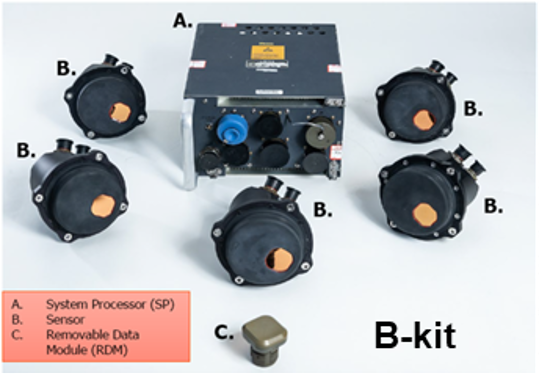
MISSION:
Develop and field world-class aircraft survivability systems that maximize the survivability of Army aircraft against a continually evolving threat without degrading combat mission effectiveness.
VISION:
Ensure that aircrews and their aircraft are protected against all emerging threats, regardless of airframe or mission.
DESCRIPTION:
Aircraft Survivability Equipment (ASE) is defined as an array of electronic devices, systems, and countermeasures designed to reduce an aircraft’s susceptibility and vulnerability to manufactured threats by detecting, alerting, and mitigating those threats.
COL BROCK ZIMMERMAN

COL Zimmerman is a native of Hoopeston, IL. He was commissioned in 2000 as an Armor Officer through the Reserve Officer Training Corps at Eastern Illinois University where he received a Bachelor of Arts degree in Psychology.
From 2001 to 2005, he served in the 1st Infantry Division, 2nd Battalion 63rd Armor located in Vilseck, Germany, as an Armor Platoon Leader, Company Executive Officer, and Battalion Staff Officer. During his tenure in Germany, COL Zimmerman deployed to Kosovo in support of North Atlantic Treaty Organization’s Operation Joint Guardian for six months in 2002 and deployed to Iraq in support of Operation Iraqi Freedom in 2004 for twelve months. In 2006, COL Zimmerman was assigned to Fort Hood, Texas, 1st Cavalry Division, Division Special Troops Battalion where he served as the Assistant S-3 (Operations). COL Zimmerman deployed in support of Operation Iraqi Freedom and served as the Multi-National Division-Baghdad Detainee Holding Area Officer-in-Charge at Camp Victory located in Baghdad, Iraq. During COL Zimmerman’s fifteen-month deployment, he was re-assigned to 1st Battalion, 12th Cavalry Regiment and served as the Battalion S-4 (Logistics). From 2008-2010, COL Zimmerman commanded Loves Park Recruiting Company under the Milwaukee Recruiting Battalion and was responsible for recruiting operations covering the northwest region of Illinois.
As an acquisition officer COL Zimmerman’s first assignment started at the Maneuver Center of Excellence, Training and Doctrine Command, Capability Manager for Armored Brigade Combat Team located at Fort Benning, GA with a focus on tracked tactical vehicles from 2010-2012. From 2013-2015, COL Zimmerman was assigned to Program Executive Office Intelligence, Electronic Warfare and Sensors and served as the Assistant Product Manager for Information Warfare and subsequently as a Department of the Army Systems Coordinator for Systems Special Programs from 2016-2017. COL Zimmerman deployed in support of Combined Security Transition Command-Afghanistan for four months as the tactical radio integration lead for Afghanistan’s Ministries of Defense and Interior. Upon redeployment, he served as the Strategic Initiatives Group Executive Officer for the Assistant Secretary of the Army (Acquisition, Logistics, and Technology) at the Pentagon. From 2018-2021, COL Zimmerman commanded Product Manager Information Warfare at Ft. Meade, MD. COL Zimmerman was centrally selected to be the Project Manager for Aircraft Survivability Equipment located in Huntsville, AL.
COL Zimmerman holds an MBA from the Naval Postgraduate School located in Monterey, CA and a Master of Science degree in Strategic Studies from the Army War College located in Carlisle, PA. His military education includes the Armor Officer Basic Course, Armor Captains Career Course, Army Recruiting Course, Acquisition Basic Course, Intermediate Level Education from the Naval War College, and the Defense Systems Management College Program Manager’s Course. His certifications include Defense Acquisition Workforce Improvement Act (DAWIA) Certified Level III in Program Management and DAWIA Certified Level I in Information Technology.
COL Zimmerman’s decorations include the Bronze Star Medal, Meritorious Service Medal (4 OLC), Army Commendation Medal (4 OLC), Army Achievement Medal (1 OLC), Iraq Campaign Medal, Afghanistan Campaign Medal, Global War on Terrorism Expeditionary Medal, Global War on Terrorism Service Medal, NATO Medal, Combat Action Badge, Army Staff Badge, Parachutist Badge, and Recruiting Badge.
COL Zimmerman is married to the former Kym C. Kozera of Dallas, TX.
MR. STEPHEN O'BRIAN

Mr. O’Brian serves as Deputy Project Manager for PM Aircraft Survivability and Equipment (PM ASE) within the Program Executive Officer for Intelligence, Electronic Warfare and Sensors (PEO IEW&S). In this capacity, he assists the PM for ASE in providing technical and managerial oversight of development, acquisition, fielding, life cycle support and Foreign Military Sales. The ASE portfolio develops, and fields world class detect and defeat capability to ensure Army aviation is survivable against enemy threats and to enable freedom of maneuver and combat effectiveness.
Prior to this assignment, Mr. O’Brian served as the Deputy Product Manager for Infrared Countermeasures (IRCM) at Program Manager Aircraft Survivability and Equipment (PM ASE). In this capacity, he provided technical and managerial oversight of the development, acquisition, fielding, and life cycle support of the Army’s IRCM portfolio. These capabilities provide the Soldier with the ability to detect and defeat threats across the IR spectrum and enable freedom of maneuver for Army aviation. The CIRCM team was awarded the 2020 Army Acquisition Executive’s Excellence in Leadership Product Management Office Team of the Year Award. Prior to this assignment, Mr. O’Brian served as the Deputy Product Lead for Army Force Management and Readiness within the Integrated Pay and Personnel System (IPPS-A) portfolio at the Program Executive Officer for Enterprise Information Systems (PEO EIS) from March 2016 – April 2018. In this capacity, he was responsible for the program management, software development, and infrastructure for the G-3/5/7 Family of Systems. This capability enables the Army to manage Forces, Equipment, and provide real-time Operational Readiness. Prior to his position at PEO EIS, Mr. O’Brian served as both an Acquisition and Aircraft Maintenance officer in the United States Air Force.
During his last assignment in the USAF, Mr. O’Brian served as the Deputy Project Manager for Logistics, Support Equipment and Simulators, F-35 Joint Program Office. In this capacity, he led a diverse workforce of Joint Service and Foreign partners in developing the worlds most advanced 5th Gen Fighter Aircraft. Prior to this assignment, Mr. O’Brian served on staff for the Secretary of the Air Force for Acquisition (SAF/AQ) both as the Chief of Acquisition Reporting and Integration, and Program Element Monitor (PEM/ DASC) for Global Mobility Aircraft. While at SAF/AQ, Mr. O’Brian was a key Warfighter interface to OSD, Joint Chiefs of Staff, Air National Guard, AF Reserve Command, and Congress integrating program guidance, assessing requirements, and refining inputs to the POM and Presidents annual budget. In addition, he worked closely with OSD and Congress on major defense acquisition reports and interfaced regularly with Professional Staff Members.
A native of Prattville, Alabama, Mr. O’Brian spent over 20 years in the USAF. During that time, he held numerous acquisition assignments in addition to those listed above such as the F-16 System Program Office, the C-17 System Program Office, and PEO Business Enterprise Systems. In addition to his acquisition program management experience, Mr. O’Brian also served as an F-16 Maintenance Officer at Spangdahlem Air Base, Germany, where he led the 23d Fighter Squadron to the USAF highest F-16 Mission Capable rate and #1 Aircraft Maintenance Unit honors.
Mr. O’Brian is a member of the Acquisition Corps and Level III Program Manager. He holds master’s degrees in Business Management and Military Operational Art and Science. His civilian awards include: the Meritorious Civilian Service Medal and the Commanders Award for Civilian Service.
He and his lovely wife Stephanie are the proud parents of Sean, Keagan, Ella, and Grayson.
LATEST PM ASE NEWS
RESOURCES
PM ASE SOCIAL MEDIA
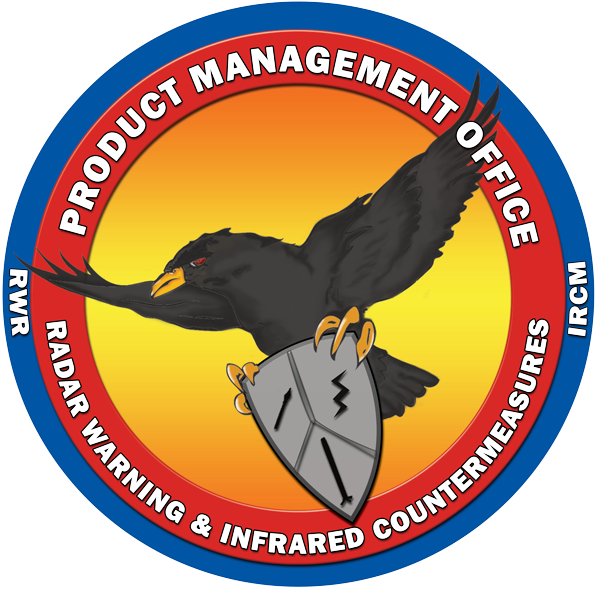
RADAR WARNING AND INFRARED COUNTERMEASURES (RWIC)
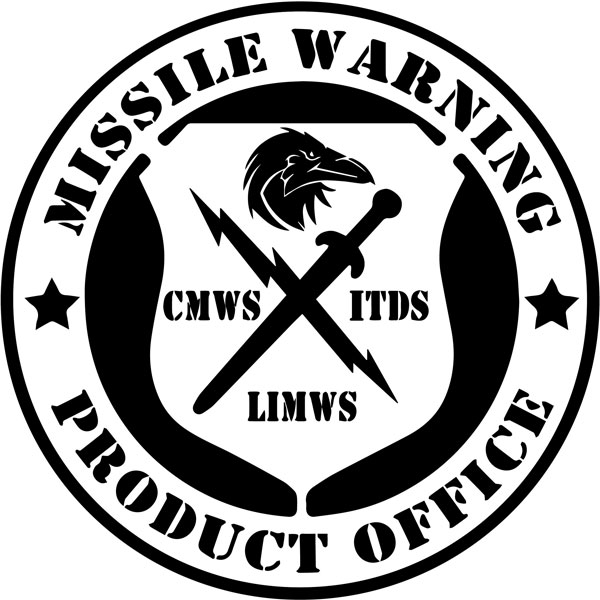
Missile Warning (MW)
Programs
RADAR WARNING AND INFRARED COUNTERMEASURES (RWIC)
Advanced Threat Infrared Countermeasures (ATIRCM)
MISSION:
Defeat Man-Portable Air Defense Systems (MANPADS) threats thereby increasing aircraft survivability.
DESCRIPTION:
ATIRCM is the Army’s legacy Aircraft Survivability Equipment (ASE) to protect crews and aircraft from advanced threat MANPADS. The system is designed for CH-47 aircraft and provides countermeasure capabilities versus most known threat systems.
SYSTEM INTERDEPENDENCIES:
-
The ATIRCM system operates with the Common Missile Warning System (CMWS). ATIRCM receives an angular bearing hand-off from CMWS and employs a pointing and tracking system that acquires and tracks the incoming missile. ATIRCM jams the missile by using modulated laser energy, thus degrading the tracking capability of the missile, and causing it to miss the aircraft
PROGRAM STATUS:
- The ATIRCM program is in the Operations and Sustainment phase and began divestment of the system in FY23. ATIRCM is being replaced with the next generation Common Infrared Countermeasure (CIRCM) system
PROJECTED ACTIVITIES:
- Continued divestment with demilitarization activities
ATIRCM System (2 Multi-Band Lasers, 2 IR Jam Heads, and 2 Jam Head Control Units)
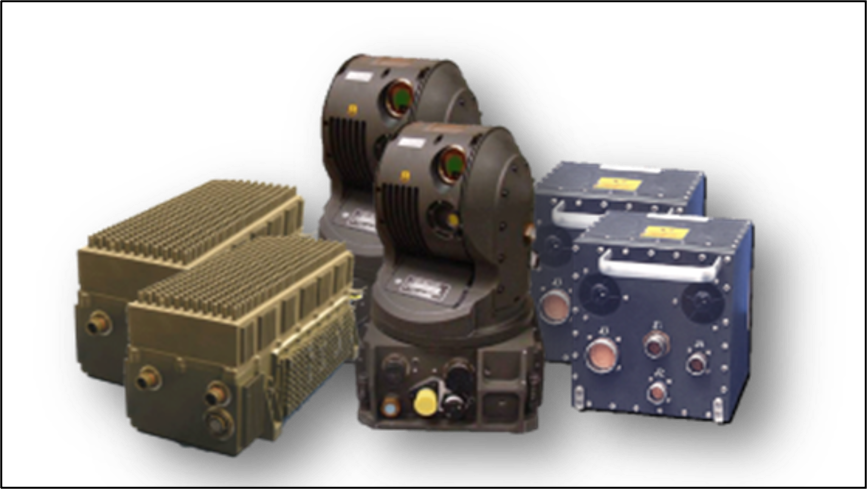
AN/APR-39D(V)2 Radar Warning Receiver
MISSION:
Provide 360° coverage to detect and identify radio frequency guided threats to an aircraft.
DESCRIPTION:
The AN/APR-39D(V)2 is a partially digital system used to rapidly detect, track, and identify increasingly complex radar threats. It modernizes the currently fielded 23-year-old APR-39C(V)1 Radar Warning Receiver. The AN/APR-39D(V)2 detects radar threats to aircraft, such as radar ground sites and particularly radar-guided missiles and guns and provides 360-degree coverage around the aircraft. It detects Radio Frequency (RF) energy, sorts and processes the signal, identifies/classifies the threat, determines the intent of the threat, and prioritizes threats detected by lethality to the aircraft. It provides the information to pilots who will utilize Tactics, Techniques and Procedures (TTPs) to employ onboard countermeasures. The Army adopted the Navy AN/APR-39D(V)2 as a bridging technology to the fully digital AN/APR-39E(V)2
AN/APR-39D(V)2 improvements over legacy systems:
- Increases detection range by as much as 4x
- Dual polarized antenna improves threat Angle of Arrival
SYSTEM INTERDEPENDENCIES:
- N/A
PROGRAM STATUS:
- First Unit Equipped Completed 3QFY23
- Second Unit Equipped Completed 2QFY25
- System serves as a bridge between legacy radar warning systems and the APR-39E(V)2 system
PROJECTED ACTIVITIES:
- Third Unit Fielding ongoing, ECD 1QFY26
- Transition to Navy Sustainment 1QFY26
Modernized Radar Warning Receiver (MRWR) E(V2)

AN/APR-39E(V)2 Modernized Radar Warning Receiver (MRWR)
MISSION:
AN/APR-39E(V)2 (Modernized Radar Warning Receiver (MRWR)) will detect, categorize, and prioritize Radio Frequency emitters to provide visual and aural alerts to the aircrew warning them of targeting by Radio Frequency (RF)-guided weapons.
DESCRIPTION:
The objective of the ASE Development project is to improve RF ASE for Army Aviation. AN/APR-39E(V)2 detects, categorizes, and prioritizes RF emitters and provides a visual / aural alert to aircrew members warning them of targeting by RF-guided weapons. The AN/APR-39E(V)2 provides 360-degree coverage around the aircraft. The Milestone Decision Authority (MDA) approved Phases 1 and 2 of a 3-phased path forward. RWR is designated as an ACAT-II program. The system consists of 1 Processor, 2 Receivers, 1 Dual Blade Low Band Array, and 4 quadrant Antennas.
AN/APR-39E(V)2 provides the following advantages over the AN/APR-39D(V)2:
- A full digital capability to enhance threat discrimination capability in millimeter wave band
- 7x Instantaneous Band Width over the AN/APR-39D(V)2
- Increased overall receiver performance against frequency agile RF threats and AESA radars
- Open VPX backplane enables Open Architecture for future growth
- Interoperable with RF electronic countermeasures (ECM), the next step in RF-ECM modernization
SYSTEM INTERDEPENDENCIES:
- The AN/APR-39E(V)2 is the detect system hardware for the USAF F-16 AN/ALQ-257 Integrated Viper Electronic Warfare Suite (IVEWS)
PROGRAM STATUS:
- AN/APR-39E(V)2 is an Engineering Change Proposal to the Navy AN/APR-39D(V)2 with advanced technologies. The system has begun initial production, as well as the completion of the Follow-on Operational Test. The program is now working to begin First Unit Equipped.
PROJECTED ACTIVITIES:
- Follow-on Operational Test completed
- Third Production Lot Delivery Order Award
- A-Kit Verification
Common Infrared Countermeasure (CIRCM)
MISSION:
Defeat Man-Portable Air Defense Systems (MANPADS) threats thereby increasing aircraft survivability.
DESCRIPTION:
CIRCM is the next generation lightweight, laser-based infrared countermeasure system that interfaces with the Army’s Common Missile Warning System (CMWS), Limited Interim Missile Warning System (LIMWS), Advanced Threat Warner (ATW), or future missile warning system to defeat current and emerging missile threats to target rotary-wing, tilt-rotor, and small fixed-wing aircraft across the DoD. CIRCM receives hand-off from missile warning systems and employs a pointing and tracking system to track incoming missiles. CIRCM, is a smaller, lighter form factor that draws less power and utilizes an Open Systems Architecture which allows flexibility with software and hardware refreshes to keep pace with future threats. CIRCM will replace the legacy Advanced Threat Infrared Countermeasure (ATIRCM) system on CH-47F aircraft.
SYSTEM INTERDEPENDENCIES:
-
The CIRCM system operates with missile warning systems. CIRCM receives an angular bearing hand-off from the systems and employs a pointing and tracking system that acquires and tracks the incoming missile. CIRCM jams the missile by using modulated laser energy, thus degrading the tracking capability of the missile, and causing it to miss the aircraft.
PROGRAM STATUS:
- The CIRCM program continues Production & Deployment activities and is executing within the parameters outlined in the Acquisition Program Baseline. In 2020 the program completed a highly successful Initial Operational Test and Evaluation (IOT&E) along with demonstrated technological and manufacturing maturity and achieved First Unit Equipped (FUE). In 2021 the program entered the Full Rate Production (FRP) phase and completed Initial Operational Capability (IOC) in 2022. The system is currently fielded protecting aircrews around the globe
PROJECTED ACTIVITIES:
-
Continued B-Kit procurements to equip the enduring Army fleet
-
Integration on future aviation aircraft such as FLRAA
-
Increased capabilities through Engineering Change Proposals
-
FMS sales and case work
-
Transition to organic sustainment activities
CIRCM System (2 Pointer Trackers, 2 Lasers and 1 System Processing Unit)
![]()
MISSILE WARNING (MW)
Common Missile Warning System (CMWS)
MISSION:
Common Missile Warning System (CMWS) is a battle-hardened Ultra-Violet (UV) based Missile and Hostile Fire warning system that provides an airborne self-protection system that detects missile launch/flight. The system protects aircraft from Infrared (IR) guided missiles and unguided munitions. It provides threat awareness and data required to deploy IR countermeasures. Over the last 16 years, the US Army has not lost an aircraft or crew to a Man-Portable Air-Defense System due in large part to CMWS effectiveness.
DESCRIPTION:
CMWS is part of an integrated IR countermeasures suite utilizing five sensors to display accurate threat location and dispense decoys/countermeasures. It detects launch and flight of infrared-guided threat missiles and unguided munitions fired at both US and Foreign Military partner aircraft. CMWS provides passive missile warning and hostile fire indication to aircrews. CMWS operates independently or as a component of the Advanced Threat Infrared Countermeasures (ATIRCM) and Common Infrared Countermeasures (CIRCM) systems. It dispenses flares and cues laser-based counter measures devices (ATIRCM and CIRCM). CMWS consists of five Electro-Optic Missile Sensors (EOMS) that are mounted to the surface of the aircraft, an Electronic Control Unit (ECU), a reprogrammable User Data Module (UDM), a Sequencer, and Improved Countermeasure Dispensers.
SYSTEM INTERDEPENDENCIES:
- CMWS resides on the host platform and provides crewmembers audio and visual indication of threats. It cues laser-based countermeasures (ATIRCM/CIRCM) and/or deploys expendable munitions (flares) via Improved Countermeasure Dispensers (ICMD). CMWS uses qualified software interfaces for the Pilot Vehicle Interface (PVI), Common Infrared Countermeasures (CIRCM), and flare-based ALE-47 Countermeasure System. The CMWS CIRCM interface supports multiple directable jamming devices and conforms to the CIRCM Interface Control Document (ICD). The CMWS ALE-47 interface utilizes RS-485 serial interface that supports multiple dispenser sets
PROGRAM STATUS:
- Hardware Transition to Sustainment (T2S) completed
- Full Materiel Release (FMR) completed
- Full Software Materiel Release (FSMR) completed
- Kilo-A Software (SW) fielding completed
- CIRCM with Kilo-A Software (SW) Testing completed
CMWS remains a highly effective and extremely reliable system, having amassed over 3.2 million combat theater flight hours and exceeded its reliability requirement a full six times over.
PROJECTED ACTIVITIES:
- Operational Sustainment Review (OSR)
- CIRCM with Kilo-A SW Full Software Material Release (FSMR)
- CIRCM with Kilo-A SW Fielding
(CMWS)
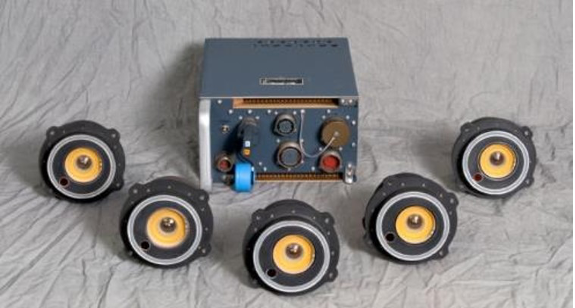
Improved Threat Detection System (ITDS)
MISSION:
Improved Threat Detection System (ITDS) is the next generation Missile Warning and Threat Detection System. It will provide a higher resolution two color infrared sensor suite with a threat agnostic approach to aircraft survivability. ITDS is expected to field to the Future Long Range Assault Aircraft (FLRAA) and the enduring fleet.
DESCRIPTION:
ITDS will provide the capability to detect, classify, cue, and declare on existing and emerging Electro-Optical/Infra-red (EO/IR) threats. ITDS will deploy based on the threat classification and the appropriate countermeasure system (Directable Infrared Countermeasure and/or expendable countermeasure). ITDS also provides appropriate Hostile Fire Indications (HFI), differentiating between small arms and rocket threats.
ITDS will be a Future Airborne Capability Environment (FACE) conformant and Modular Open Systems Approach (MOSA)-compliant system, able to operate on a digital backbone. ITDS will be comprised of IR sensors, a processor, and a memory module. ITDS will employ an incremental approach, which will include incorporating laser detection into the overall system.
SYSTEM INTERDEPENDENCIES:
- ITDS will reside on the host platform and provide crewmembers audio and visual indication of threats. It cues laser-based countermeasures (CIRCM) and/or deploys expendable munitions (flares) via Improved Countermeasure Dispensers (ICMD)
PROGRAM STATUS:
- Other Transaction Authority (OTA) strategy approved
- Two-year competitive development and demonstration effort signed
- ITDS OTA competitive contract awarded
PROJECTED ACTIVITIES:
- Sensor Characterization, Flight Test, and Free Flight Missile Test
- Digital System Model Assessment
- Aircraft Integration Activities
- Technical and Manufacturing Readiness and Reliability Assessments
- Abbreviated Capability Development Document (A-CDD) Approval
- Middle Tier of Acquisition – Rapid Prototyping (MTA-RP) Pathway Initiation
Laser Detection System (LDS)
MISSION:
Airborne self-protection system which detects aircraft targeting by laser illumination.
DESCRIPTION:
The AN/AVR-2B(V) LDS is a passive laser warning system which receives, processes, and displays threat information resulting from aircraft illumination from Laser Designators, Range Finders, and Beam Riding Missiles for aircrew situational awareness.
SYSTEM INTERDEPENDENCIES:
- On the UH-60 aircraft, the LDS works with the APR-39 RWR for display and voice capabilities
- On the CH-47F, the LDS works with the AAR-57 CMWS system for display and voice capabilities
PROGRAM STATUS:
- The AN/AVR-2B achieved Full Materiel Release in 2008
- The AN/AVR-2B(V) LDS completed the final UH-60L aircraft in 2020
- The AN/AVR-2B(V) LDS Modification Work Order installation on the CH-47F aircraft continues
PROJECTED ACTIVITIES:
- Continuing AN/AVR-2B installations on remaining CH-47F fleet
LDS

Limited Interim Missile Warning System (LIMWS)
MISSION:
LIMWS is the Quick Reaction Capability (QRC) answer to the Chief of Staff of the Army’s Directed Requirement to rapidly develop, procure, and field a missile warning system with a greater capability than the current Common Missile Warning System (CMWS) to maintain tactical and technical overmatch of our enemies.
DESCRIPTION:
LIMWS protects the aircraft from guided missile and unguided hostile fire indication by deploying flares and/or by cueing laser-based countermeasure systems for Conventional Army and Special Operations aviation platforms. The system builds upon the CMWS A-kit to provide Commanders’ flexibility between Missile Warning Systems.
LIMWS utilizes up to six 2-color infrared (IR)-based sensors to detect incoming missiles and unguided hostile fire. The system integrates fiber optic cabling to provide high band-width imagery data link from the sensors to the system processor. The system employs machine learning algorithms to discriminate threats, improves performance in various atmospheric conditions, and high clutter environments. It is interchangeable between aircraft without a requirement for special alignment equipment, integrates with CIRCM laser-based and ALE-47 flare-based countermeasure systems, and provides faster detection times and increased detection range to provide greater protection of aircraft and aircrews. Finally, both the fiber optic cabling and system processor are designed for future upgrades and integration with other Aviation Survivability Systems.
SYSTEM INTERDEPENDENCIES:
- LIMWS resides on the host platform and provides crewmembers audio and visual indication of threats. It cues laser-based countermeasures (CIRCM) and/or deploys expendable munitions (flares) via Improved Countermeasure Dispensers (ICMD). The sensor interface utilizes a fiber-optic high-speed downlink for a higher data rate and reuses qualified software interfaces for the Pilot Vehicle Interface (PVI), Common Infrared Countermeasures (CIRCM), and flare-based ALE-47Countermeasure System. The LIMWS CIRCM interface utilizes Ethernet that supports multiple directable jamming devices and conforms to the CIRCM Interface Control Document (ICD). The CMWS ALE-47 uses a serial interface to support multiple dispenser sets
PROGRAM STATUS:
- LIMWS B-kit Deliveries Complete
- LCCS FY24 Product Support and Contractor Logistics Support task orders were awarded
PROJECTED ACTIVITIES:
- Complete A-Kit Installs
- CH-47 Fairing Ground and Flight Test
- CH-47 Fairing Urgent Material Release
(LIMWS)
